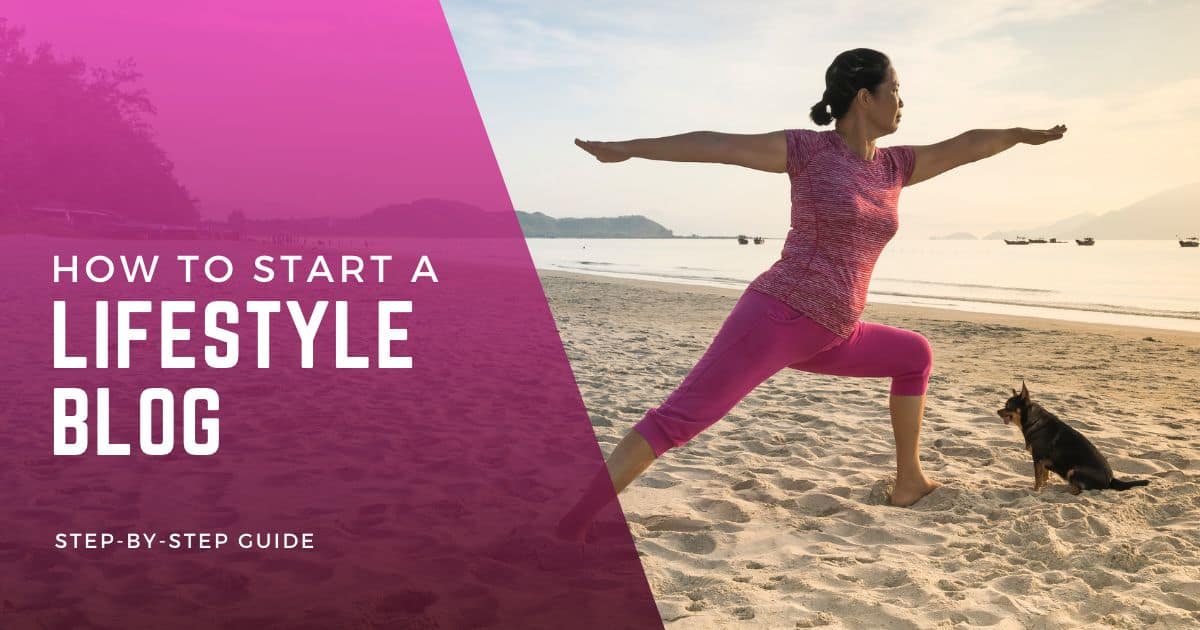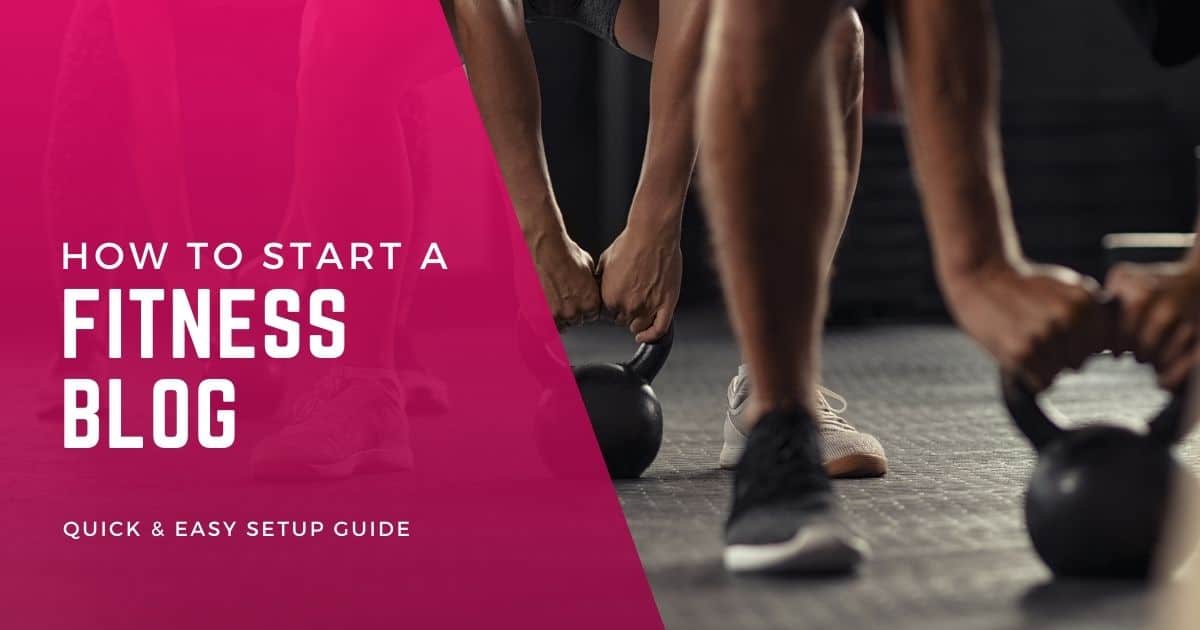Starting a lifestyle blog may seem like a daunting task. I’ve been there – overwhelmed by the choices and unsure of where to start, despite knowing it’s a proven way for spirited individuals to express their passions and potentially earn an income.
In this post, we’ll break down the process of starting a lifestyle blog into simple, actionable steps. Leveraging my personal experience and expertise, I’ll guide you from choosing a lifestyle niche that resonates with your interests right down to monetizing your content.
In addition, you will gain a solid understanding of how to start a lifestyle blog and also acquire new skills to navigate this new path with confidence. Let’s do this!
Key Takeaways
- Choosing a niche that aligns with your personal interests and passions is crucial when starting a blog.
- Research different blogging platforms, such as WordPress, Blogger, or Wix, to find the one that best suits your needs and target audience.
- Selecting a unique and memorable domain name for your blog is essential for brand recognition and SEO purposes.
- Set up reliable hosting services to ensure the smooth functioning of your lifestyle blog.
- Launch your blog on WordPress by selecting a hosting provider, installing WordPress, choosing a theme, customizing your site, creating important pages, and installing essential plugins.
- Design an attractive theme for your blog that reflects your personal style while keeping in mind the preferences of your target audience.
- Publish high-quality content consistently and promote it through social media platforms and guest posting opportunities to attract readership.
Choose Your Niche

Starting a lifestyle blog is an exciting journey, but the very first and crucial step of this adventure is deciding on your niche. As a blogger with personal interests and passions, selecting a niche that aligns with those aspects of your life can guide you in attracting a specific audience who will engage with your content.
It’s akin to building your home’s strong and well-thought-out foundation.
Furthermore, digging deeper into keyword research for low competition niches can set you up for success down the line. There are potent tools at our disposal, like blog niche generators, that assist burgeoning bloggers in finding their unique corner within the blogging world.
With strategies like these, alongside staying updated on current trends, we open doors to untapped goldmines of profitable niches waiting to be discovered and written about! So plunge headfirst into research mode before finalizing any decisions – it’ll pay off handsomely in terms of growth and profitability for your soon-to-be-launched lifestyle blog.
Select Your Blogging Platform
Starting your lifestyle blog requires a critical decision: selecting the appropriate blogging platform. Here’s my advice for navigating this key step:
- First, consider WordPress, one of the most popular choices among lifestyle bloggers. This platform is widely used because of its high customization options, offering immense flexibility in terms of design and functionality.
- Alternatively, you could choose Blogger, a Google-owned platform known for its user-friendliness. If you’re just starting out and prefer an easy-to-use interface that seamlessly integrates with other Google products like Google Adsense or Analytics, Blogger might be for you.
- Another viable option is Wix. Known for its intuitive drag-and-drop feature, Wix makes designing and customizing a blog easy, even without technical expertise.
- While selecting a platform, I cannot emphasize enough the importance of choosing a unique domain name for your blog. It’s not just your online address; it becomes synonymous with your brand identity.
- Additionally, most blogging platforms require hosting services to make your blog live on the internet—another factor to consider during selection.
- Your niche and target audience should also influence your blogging platform choice. Certain platforms may cater better to specific niches or provide tools specifically aimed at your target demographics.
- Remember that different platforms have varying levels of potential for monetization opportunities—a key consideration if you plan to turn this into an income-generating endeavor eventually.
- Finally, don’t rush this decision! Do thorough research on various platforms’ features, pricing options, and ease of use before committing—after all, switching later can be quite a hassle.
Choose a Domain Name
Starting your lifestyle blog begins with choosing a distinct and memorable domain name. Your chosen domain name should be a clear reflection of your brand, resonating with your target audience, and easy to recall.
A simple yet effective strategy is selecting a unique and brandable domain name that describes the focus of your content or appeals directly to the readership; think smartblogger.com or problogger.com.
Including keywords in your domain relevant to your niche can also be advantageous for SEO purposes. Remember, simplicity rules! Ensure it’s easy to spell, pronounce, and preferably on .com extension since this is more familiar for many internet users worldwide.
Of course, various tools, such as domain name generators, can assist you by providing a plethora of ideas based on inputs related to your blog’s purpose and audience.
A well-chosen name isn’t just about aesthetics–it enhances its professionalism too.
Take into account long-term implications when making this decision because changing it later might result in losing traffic and impacting brand recognition adversely. So start thinking about what catchy word combos will truly capture the essence of your lifestyle blog!
Set Up Hosting
Setting up hosting for your lifestyle blog is a crucial step in ensuring its success. As a blogger and entrepreneur, you need to choose a reliable hosting service that can support your website and provide the necessary features. Here’s how you can set up hosting for your lifestyle blog:
- Research different hosting providers: Take the time to research different hosting providers and compare their plans, prices, and features. Look for providers that have a good reputation and offer reliable customer support.
- Select a hosting plan: Once you’ve narrowed down your options, select a hosting plan that suits your needs. Consider factors such as storage space, bandwidth, and the ability to handle traffic spikes. Starting with a basic plan is usually sufficient for new bloggers.
- Purchase your hosting plan: After selecting a plan, proceed to purchase it from the hosting provider’s website. Make sure to review the terms and conditions before making any payments.
- Set up an account: Create an account with the hosting provider using your email address and other necessary information. This will give you access to the control panel where you can manage your website.
- Register your domain name: If you haven’t already registered a domain name for your lifestyle blog, now is the time to do it. Many hosting providers offer domain registration services as well. Choose a memorable and relevant domain name that reflects your blog’s niche.
- Link your domain with hosting: To connect your newly registered domain with your hosting account, update the nameservers provided by your host in the DNS (Domain Name System) settings of your domain registrar.
Launch Your Blog on WordPress

Launching your blog on WordPress is a crucial step in starting your lifestyle blog. Here are six steps to help you launch your blog successfully:
- Choose a hosting provider: Selecting a reliable hosting provider is essential for the smooth functioning of your blog. Look for providers that offer good speed, uptime, and customer support.
- Install WordPress: Most hosting providers offer a one-click WordPress installation process, making it quick and easy to set up your blog. Follow the instructions provided by your hosting provider to install WordPress.
- Choose a theme: Selecting an attractive and user-friendly theme is important to create a visually appealing blog. Browse through the free and premium themes available on WordPress and choose one that suits your niche and personal style.
- Customize your site: Once you have chosen a theme, customize it according to your preferences. Add your logo, customize colors, fonts, and layouts to create a unique look for your blog.
- Set up important pages: Create essential pages such as About Me, Contact, and Privacy Policy. These pages add credibility to your blog and provide important information to readers.
- Install essential plugins: Enhance the functionality of your blog by installing necessary plugins such as Yoast SEO for search engine optimization, Akismet for spam protection, and Jetpack for analytics and social sharing.
Set Up Your Blog’s Theme

Setting up your blog’s theme is a crucial step in creating an attractive and engaging lifestyle blog. Here are the steps to guide you:
- Choose a visually appealing theme: Look for a theme that reflects your personal style and resonates with your target audience. Consider factors like layout, color scheme, typography, and overall aesthetics.
- Customize the header and logo: Add your blog’s name or logo to create a strong brand identity. This will help readers easily recognize and remember your blog.
- Create an inviting home page: Your home page is usually the first impression readers get of your blog. Make sure it showcases your best content and provides easy navigation to different sections of your blog.
- Select appropriate fonts and typography: Choose fonts that are easy to read and align with the overall style of your blog. Avoid using too many different fonts as it can make your blog look cluttered.
- Optimize for mobile responsiveness: With more people accessing websites on their mobile devices, it’s essential to ensure that your blog’s theme is responsive and looks good on different screen sizes.
- Use high-quality images: Images play a significant role in enhancing the visual appeal of your blog. Use high-resolution images that are relevant to your content to captivate readers’ attention.
- Incorporate social media integration: Make it easy for readers to share your content by including social media sharing buttons on each post. This way, you can expand your reach and attract more visitors to your blog.
Publish and Promote Your Blog
Once your lifestyle blog is set up and ready to go, it’s time to focus on publishing high-quality content and promoting your blog to attract readers. Start by creating a content calendar that outlines the topics and schedule for your posts.
This will help you stay organized and ensure a consistent flow of fresh content.
When publishing blog posts, make sure each one is well-written, engaging, and provides value to your audience. Use relevant keywords in your post titles, headings, and throughout the body of the article to optimize it for search engines.
This will improve your chances of ranking higher in search results and driving organic traffic to your blog.
Promoting your blog is equally important as publishing great content. One way to do this is by utilizing social media platforms like Instagram, Facebook, Twitter, or Pinterest to share snippets of your blog posts along with eye-catching images or graphics that entice users to click through.
Another effective method is reaching out for guest posting opportunities on other popular blogs within the same niche as yours. This helps expose yourself and gain credibility among new audiences who are interested in similar topics.
Additionally, consider building an email list where you can send regular newsletters or updates about new blog posts directly to subscribers’ inboxes. Providing valuable incentives such as freebies or exclusive content can encourage visitors to subscribe.
Remember that consistency is key when it comes to blogging success. Don’t be discouraged if you don’t see instant results – keep producing quality content regularly and persistently promote it across various channels.
With time and effort invested into both publishing compelling articles and effectively promoting them, you’ll be able to grow a loyal following for your lifestyle blog.
Monetize Your Lifestyle Blog

Monetizing your lifestyle blog can be a great way to generate income from your passion and interests. Here are nine effective ways to monetize your lifestyle blog:
- Affiliate marketing: This is one of the top ways to monetize your blog. By promoting products and services relevant to your niche, you can earn a commission for each sale made through your affiliate links.
- Sponsored content: Collaborating with brands and writing sponsored posts or creating sponsored social media content can be a lucrative income stream for your lifestyle blog.
- Ads: Displaying advertisements on your blog can help generate revenue. You can sign up for ad networks like Google AdSense or Mediavine to start earning money from ad impressions and clicks.
- Digital products: Create and sell digital products such as e-books, online courses, or printables related to your niche. This allows you to diversify your income while offering value to your audience.
- Membership or subscription models: Offer exclusive content or access to a private community in exchange for a monthly or yearly membership fee. This creates a recurring revenue stream for your blog.
- Brand partnerships: Collaborate with brands in sponsored collaborations, ambassador programs, or brand partnerships that align with your blog’s niche and values.
- E-commerce: If you have physical products that complement your lifestyle blog, consider setting up an online store on platforms like Shopify or WordPress running WooCommerce.
- Services: Leverage your expertise by offering services such as consulting, coaching, or freelance work within the scope of your niche.
- Events and workshops: Organize offline events, workshops, or webinars tailored to the interests of your target audience. Charging admission fees or partnering with sponsors can help monetize these events further.
Conclusion
Following the steps outlined in this guide, you can choose your niche, select the right platform and domain name, set up hosting, launch your blog on WordPress, design your theme, and publish and promote your content effectively to attract readership.
With dedication and effort, you can monetize your lifestyle blog and turn it into a thriving online business. So go ahead and take that first step towards creating a successful lifestyle blog that reflects who you are.
Starting a lifestyle blog can be an exciting journey of self-expression and creativity.
Happy blogging!
FAQs
What topics can I cover in a lifestyle blog?
In a lifestyle blog, you can cover various topics such as fashion, beauty, travel, wellness, home decor, food and recipes, personal development, relationships, and more! The key is to choose topics that align with your interests and resonate with your target audience.
How do I choose a name for my lifestyle blog?
When choosing a name for your lifestyle blog, consider something that reflects your niche or the overall vibe you want to convey. It should be catchy, memorable, and easy to spell. You may also want to check if the domain name is available before finalizing your decision.
Do I need any technical skills to start a lifestyle blog?
No technical skills are required to start a lifestyle blog. Platforms like WordPress offer user-friendly interfaces and customizable templates that make it easy for beginners to set up their blogs without coding knowledge. However, having some basic computer skills will be beneficial for managing content and customizing your site.
How can I grow my audience on my lifestyle blog?
To grow your audience on your lifestyle blog, focus on producing high-quality content consistently and promoting it through various channels like social media platforms (Instagram, Pinterest), email newsletters, guest blogging opportunities or collaborations with other bloggers/influencers in related niches. Engaging with your readers by responding to comments and encouraging social sharing can also help increase visibility and attract new followers.



